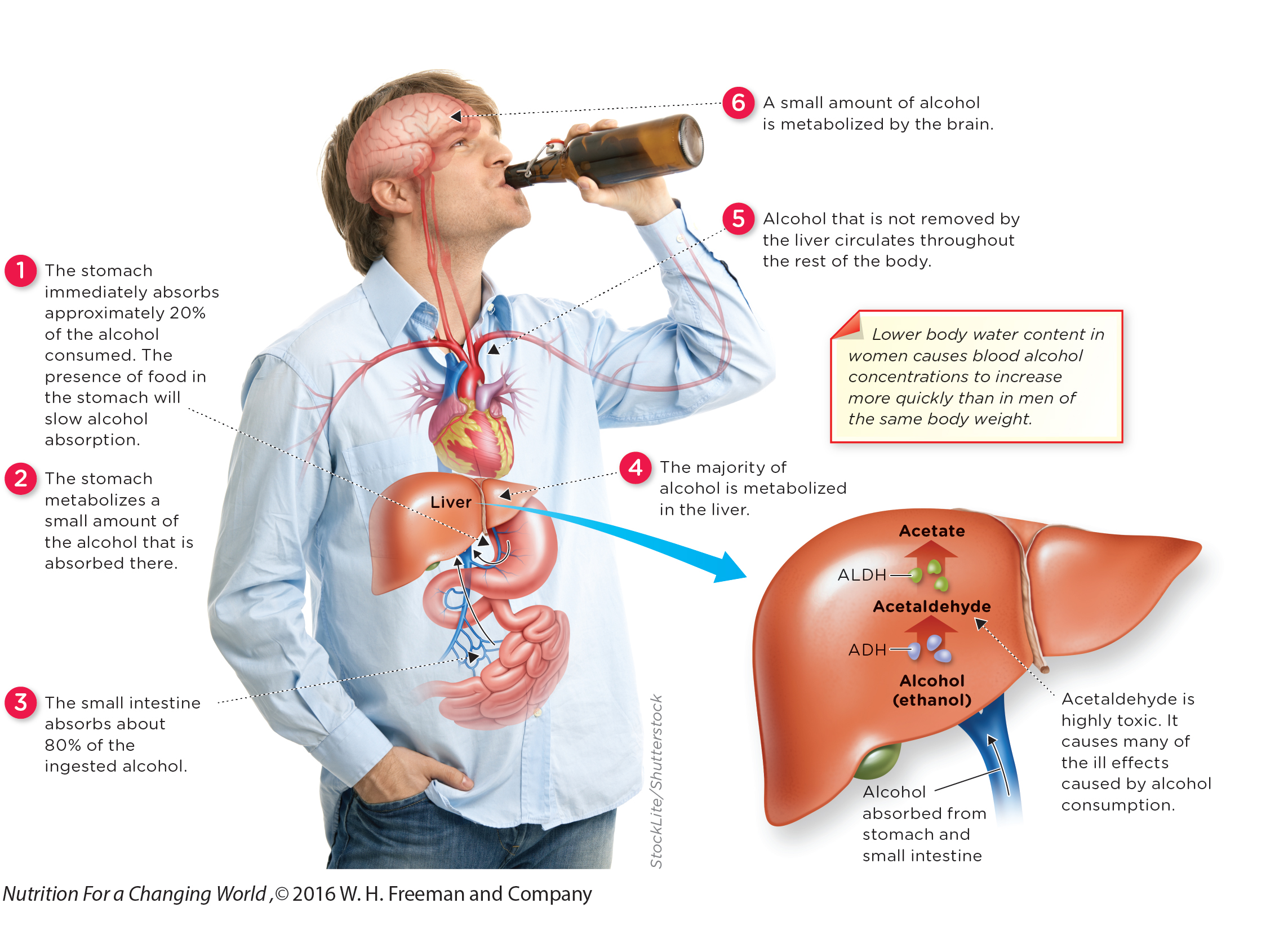Alcohol is readily absorbed into the bloodstream through diffusion and then is transported to the body’s cells and tissues and dispersed throughout the water-containing portions of the body. Approximately one-fifth of all alcohol consumed is absorbed through the stomach; the rest is absorbed in the small intestine. When consumed in moderate amounts, alcohol is metabolized primarily in the liver by a two-step process to form acetate. In the first step, the enzyme alcohol dehydrogenase (ADH) converts alcohol to acetaldehyde, which is a highly reactive and toxic compound that can damage cellular components, including DNA. Acetaldehyde is then converted to acetate by the enzyme acetaldehyde dehydrogenase (ALDH), and acetate then disperses to tissues throughout the body where it is converted to acetyl-coenzyme A, which can be used as a source of energy in the liver and elsewhere in the body. With higher levels of alcohol intake, the excessive amount of acetyl-coenzyme A that is produced in the liver results in high levels of fat synthesis that can cause a fatty liver and, eventually, liver damage. Most alcohol is metabolized to acetate in the liver, but a small amount can also be metabolized in the stomach by the same two-step process. See the Alcohol Absorption and Metabolism illustration.
The microsomal ethanol-oxidizing system (MEOS), found in the endoplasmic reticulum of liver cells, is an alternative means of oxidizing alcohol (ethanol) to acetaldehyde. Normally this system contributes little to the metabolism of alcohol. However, the activity of this system increases with chronic consumption of high amounts of alcohol. As a result, alcohol is metabolized more quickly and alcohol concentrations in blood do not increase as much as they would under normal circumstances, which explains why tolerance of alcohol increases in those who drink frequently. The increased speed of alcohol metabolism has a downside; it also speeds production of the highly toxic acetaldehyde, which increases tissue damage and the risk of cancer.

